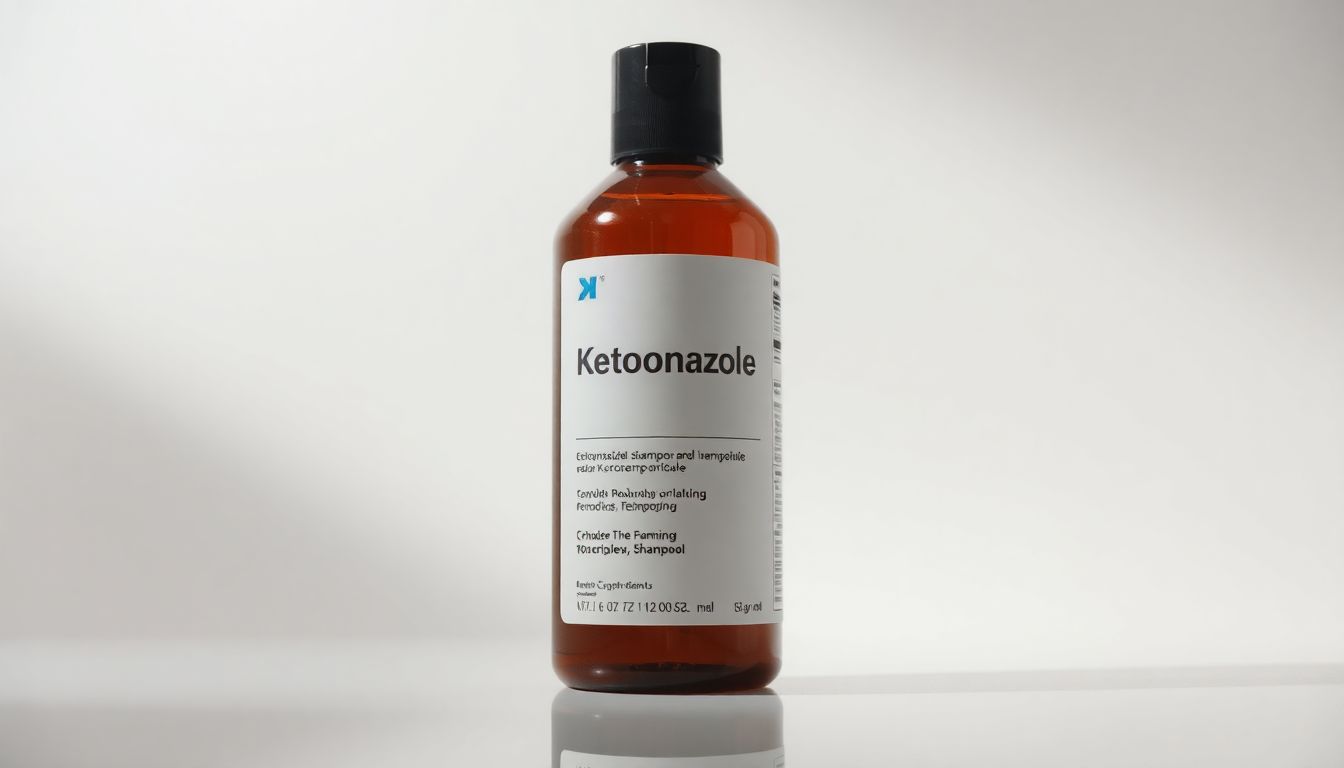
Conquer Dandruff and Itch: Your Guide to Ketoconazole Shampoo
Understanding Ketoconazole Shampoo
What is Ketoconazole and How Does it Work?
Ketoconazole is an antifungal agent widely used in various formulations, especially shampoos. It mainly targets the fungus Malassezia globosa, one of the significant contributors to dandruff. By inhibiting the growth of this fungus, ketoconazole effectively reduces flaking and itching. Studies have shown that ketoconazole shampoo can significantly improve dandruff symptoms compared to other treatments. Its effectiveness extends beyond dandruff, being used to treat conditions like seborrheic dermatitis and tinea versicolor.
Ketoconazole Shampoo vs. Other Dandruff Treatments
When it comes to dandruff treatments, ketoconazole stands out, but how does it compare to others like selenium sulfide, zinc pyrithione, and coal tar?
Here's a summary of the main differences:
| Treatment | Active Ingredient | Effectiveness | Pros | Cons |
|---|---|---|---|---|
| Ketoconazole Shampoo | Ketoconazole | High | Effective against Malassezia | Possible irritation |
| Selenium Sulfide | Selenium sulfide | Moderate to High | Reduces oiliness | May stain light hair |
| Zinc Pyrithione | Zinc pyrithione | Moderate | Gentle, easy to find | Less effective for severe cases |
| Coal Tar | Coal tar | Variable | Good for severe dandruff | Strong smell, may cause irritation |
Each treatment has its strengths and weaknesses. Choosing the right one depends on your specific needs.
Finding the Right Ketoconazole Shampoo for You
When selecting a ketoconazole shampoo, consider the concentration of ketoconazole and additional ingredients. Common concentrations range from 1% to 2%. Popular brands with good consumer reviews include Nizoral and Revita. Before use, check for possible side effects such as dryness or irritation, and consult your doctor if you're unsure about using it.
How to Use Ketoconazole Shampoo Effectively
Application Techniques for Optimal Results
For the best results, follow these steps:
- Wet your hair thoroughly.
- Apply a quarter-sized amount of shampoo.
- Massage it into your scalp gently.
- Leave the shampoo on for at least 3-5 minutes to let it work.
- Rinse well with water.
Avoid a rush. Leaving the shampoo on for the right amount of time is key to effective treatment.
Frequency of Use and Treatment Duration
Start by using ketoconazole shampoo twice a week. Gradually, you can reduce it to once a week as symptoms improve. Consistency is crucial, so stick to your routine. If symptoms persist after a few weeks, consult a dermatologist for further advice.
Maintaining Results After Treatment
To keep dandruff at bay, consider these strategies:
- Use a gentle, moisturizing conditioner to maintain scalp health.
- Avoid harsh hair products.
- Wash hair regularly to prevent buildup.
- Manage stress through relaxation techniques.
- Incorporate a balanced diet rich in omega-3 fatty acids.
Ketoconazole Shampoo for Specific Conditions
Treating Seborrheic Dermatitis with Ketoconazole
Seborrheic dermatitis is a common cause of dandruff. Ketoconazole shampoo targets the fungus that worsens the condition, helping to alleviate symptoms. One study found that consistent use led to a significant reduction in dandruff scales and itching, making daily life more comfortable for many sufferers.
Ketoconazole Shampoo for Tinea Versicolor
Tinea versicolor is a fungal skin infection characterized by discolored patches on the skin. Ketoconazole shampoo can effectively treat this condition. Statistics show that it affects millions globally, especially in warm and humid climates. Experts acknowledge ketoconazole's effectiveness in clearing these patches, making it a reliable option.
Ketoconazole Shampoo and Other Skin Conditions
Ketoconazole shampoo may also be effective for other skin conditions like psoriasis or folliculitis. However, it’s essential to consult with a dermatologist before using it for off-label purposes, as alternatives may work better in some cases.
Addressing Common Concerns and Misconceptions
Safety and Side Effects of Ketoconazole Shampoo
Ketoconazole shampoo is generally safe but can cause dryness or irritation in some. If you have sensitive skin, conduct a patch test first. If you experience side effects, consider using a milder shampoo or adjusting the frequency of use.
Interactions with Other Medications
Ketoconazole may interact with specific medications, such as blood thinners or certain antifungal drugs. Always consult with your healthcare provider or pharmacist before starting a new shampoo if you’re on other medications.
Long-Term Use and Potential Risks
Long-term use of ketoconazole shampoo may lead to scalp irritation or decreased effectiveness over time. It’s wise to take breaks or explore alternative treatments to maintain beneficial effects without developing resistance.
Conclusion: A Healthy Scalp, Naturally
In summary, ketoconazole shampoo is a powerful tool to combat dandruff and various skin conditions. Remember, consistency is essential for effective results. Consulting a dermatologist for persistent issues is always a smart choice. With the right approach, you can maintain a healthy, itch-free scalp, welcoming a new era of confidence and comfort.






0 Comments